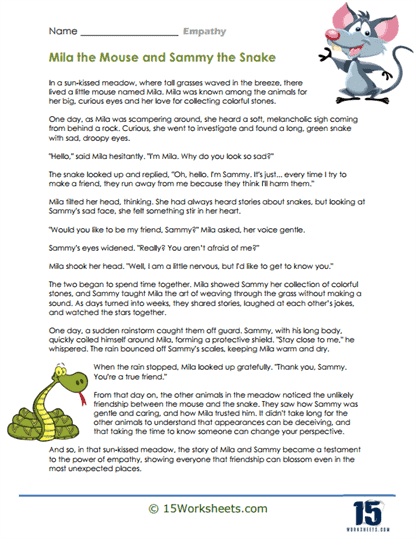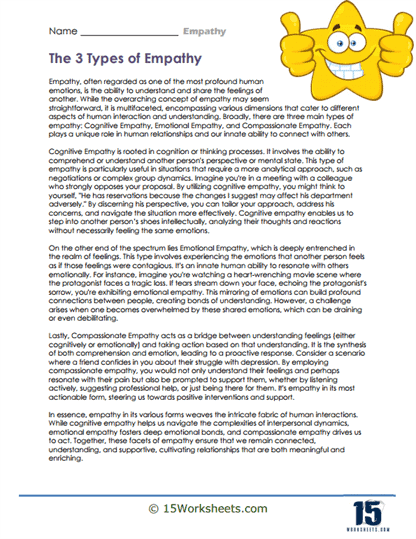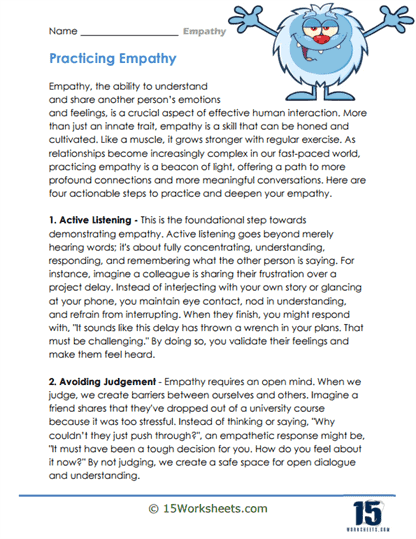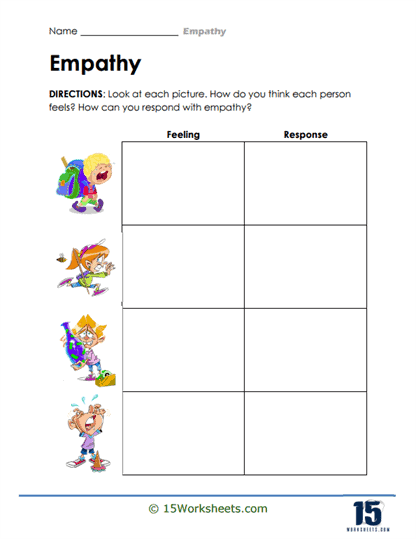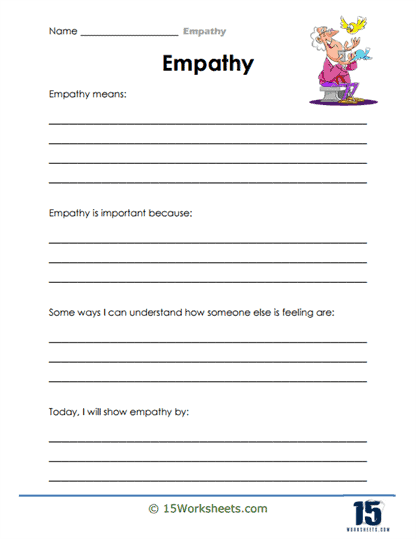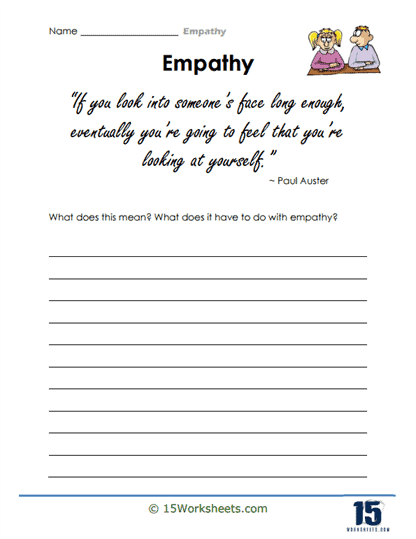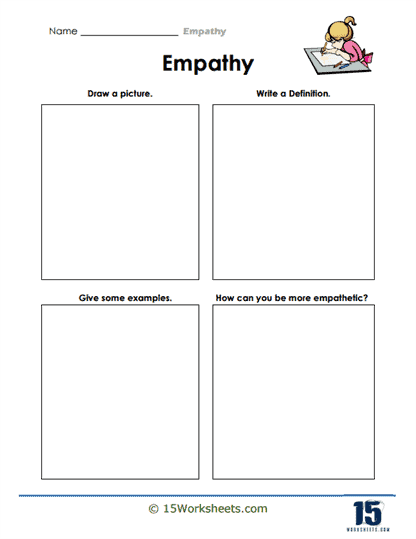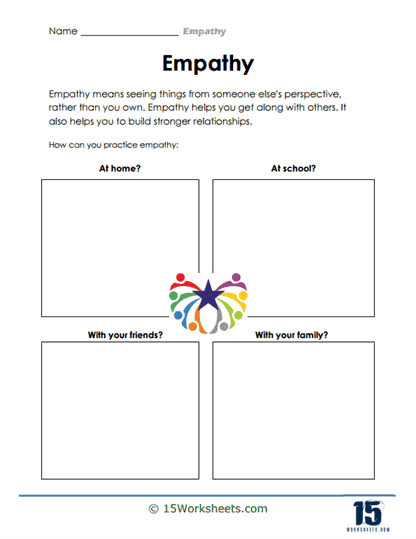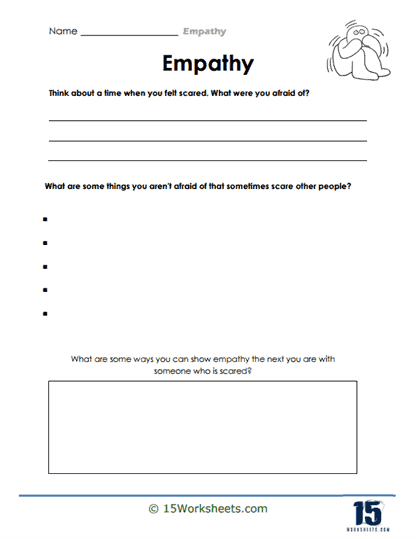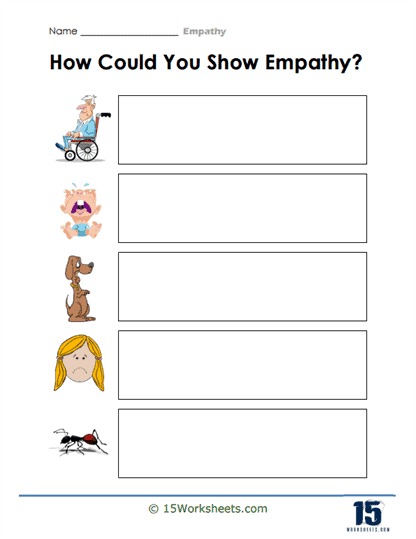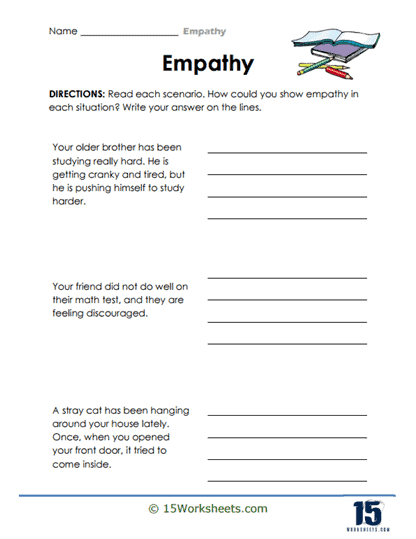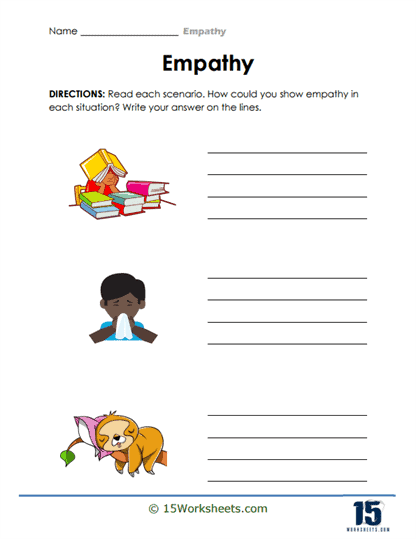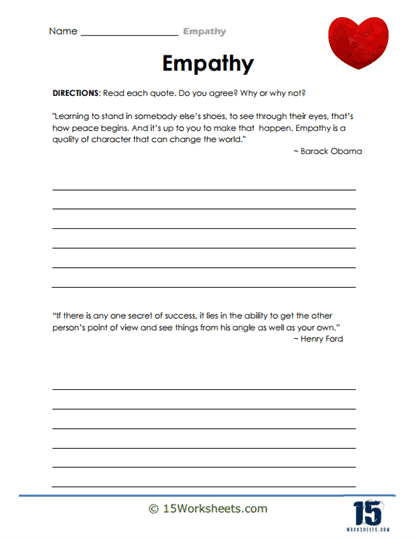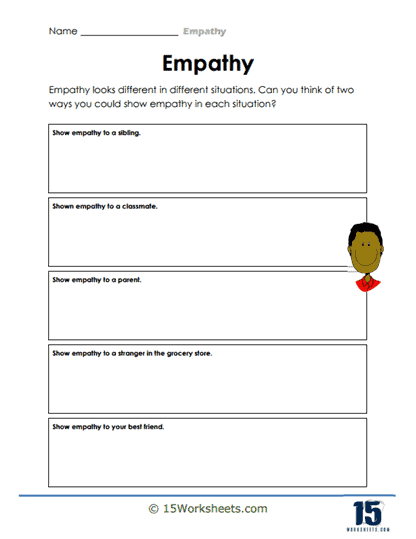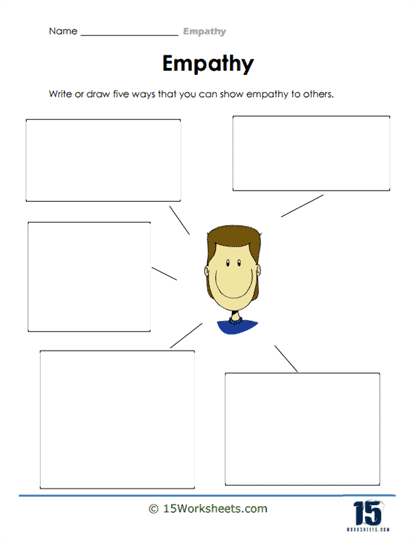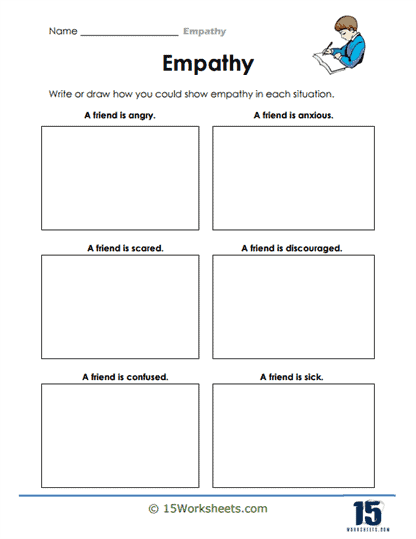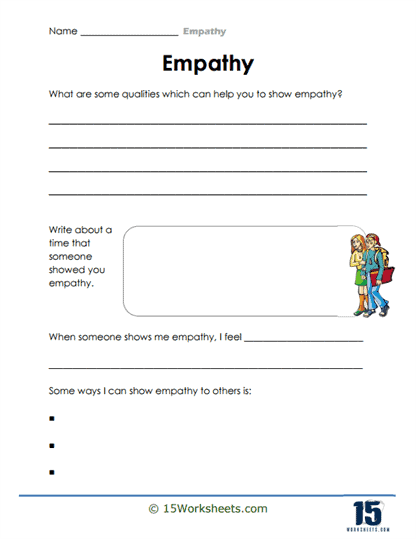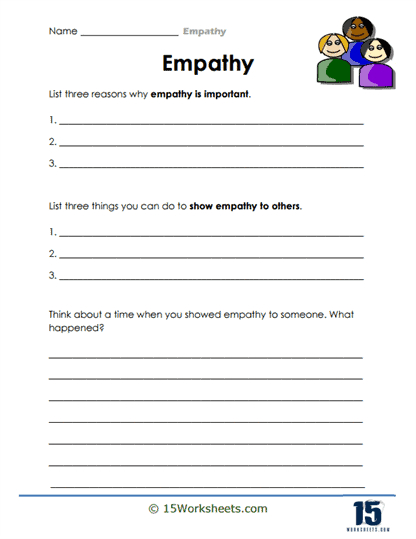Empathy Worksheets
About These 15 Worksheets
The collection of empathy worksheets uploaded presents a comprehensive approach to teaching empathy, focusing on multiple aspects of emotional intelligence. The activities target different dimensions of empathy, helping students not only to understand emotions but also to apply empathetic thinking in everyday situations. The worksheets are designed to engage students in understanding others’ emotions, practicing compassion, and developing emotional literacy through various methods.
The first key skill these worksheets work on is the recognition of emotions in others. Several exercises involve analyzing different scenarios or images where students must identify the feelings of the characters involved. This helps in developing a student’s ability to read and interpret emotional cues, a foundational aspect of emotional intelligence.
Another essential skill is perspective-taking, where students are encouraged to put themselves in another person’s shoes. The worksheets ask students to imagine how they would feel in specific situations and then come up with ways to show empathy. This builds cognitive empathy, which is crucial for understanding how others think and feel.
The collection also emphasizes problem-solving and emotional responses. After identifying emotions or understanding another’s perspective, students are tasked with thinking of appropriate responses. This helps them practice constructive emotional responses, reinforcing the idea that empathy is not just about understanding but also about how one chooses to act based on that understanding.
The worksheets foster self-reflection and connection to personal experiences. Students are prompted to relate the concept of empathy to their own lives, such as reflecting on times when someone showed them empathy. This introspective approach deepens their emotional awareness and personal connection to the topic.
The worksheets incorporate social-emotional learning (SEL) principles by addressing how empathy can be practiced across various environments—at home, school, and with friends and family. This helps students understand that empathy is applicable in all areas of life, and it encourages them to apply these skills in diverse social contexts.
Have you ever felt happy when your friend was happy? Or maybe you felt sad when you saw someone cry? This feeling is called “empathy.” It’s like putting yourself in another person’s shoes and understanding how they feel. It’s a superpower that helps us care about others!
Let’s think about some times when you might see or use empathy:
Lost Toy – Imagine you’re at the playground and you see a kid looking all over, tears in their eyes, because they can’t find their favorite toy. If you feel sad for them and maybe even help them look, that’s empathy!
New Kid in Class – There’s a new kid in your class, and they’re sitting all alone. You remember how that felt when you first started. If you go over and sit with them so they don’t feel lonely, that’s showing empathy.
Hurt Friend – If you’re playing and your friend falls down and scrapes their knee, and you feel worried about them, that’s empathy. Maybe you even get them a band-aid or tell a grown-up to help.
Sharing a Snack – You see that one of your friends didn’t get a snack today, and they’re hungry. If you split your snack with them because you know how hungry feels, you’re showing empathy.
Birthday Happiness – Your friend just got a gift they really wanted for their birthday. Even though it’s not your gift, you feel super happy for them. That’s empathy, too!
Empathy worksheets are like tools in a toolbox. They help you understand your feelings and the feelings of others. When you can do that, you can be a kinder friend, a helpful classmate, and a caring person. These worksheets help make the world a nicer place, one feeling at a time!
Remember – It’s okay to feel all sorts of emotions. Everyone does! And just like you practice math or reading, practicing empathy makes you better at understanding and caring for others.
Types of Exercises on These Worksheets
Now, let’s dive into the fun part! Here are some types of exercises you might find on an empathy worksheet:
Storytime – You might read a short story about someone. After reading, there might be questions like:
- How do you think the person felt?
- What would you do if you were in their place?
- Can you think of a time you felt the same way?
Picture Puzzles – These are pictures of people showing different emotions. You have to guess what they are feeling. For example:
- A picture of a girl dropping her ice cream.
- A picture of a boy getting a surprise birthday present.
- Looking at their faces and what’s happening, can you guess how they feel?
Feeling Words – There will be a list of feeling words, like “happy,” “sad,” “angry,” or “excited.” You might:
- Match the word to a picture.
- Write a story using the word.
- Draw a face that shows that feeling.
Sharing Stories – This exercise is all about sharing your own feelings. You might be asked:
- What made you happy today?
- What made you feel upset or sad?
- How did you help someone feel better?
By sharing your stories, you learn about your own feelings and how they are just as important as others’.
Walk in Their Shoes – This is a cool exercise where you pretend to be someone else. Like:
- Being a new student in school.
- Being a bird that can’t fly.
- Being a superhero who feels scared.
By pretending, you get to think about how others might feel in different situations.
Feelings Bingo – Just like the game of Bingo, but instead of numbers, there are emotions. When someone says an emotion like “happy” or “lonely,” you check it off if you have it on your card. This game helps you recognize many different feelings.
Helping Hands – This exercise is all about thinking of ways to help someone feel better. For example:
- What can you do if your friend’s pet runs away?
- How can you make someone smile if they are feeling down?
- You can draw or write your answers. The goal is to think of kind things you can do for others.
Feelings Diary – This is like a regular diary, but it focuses on feelings. Every day, you can write or draw about:
- How you felt.
- Why you felt that way.
- What you did to help yourself or someone else feel better.

